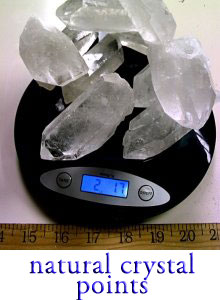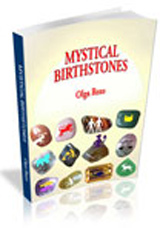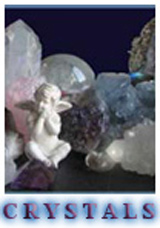
| |
Sunstone gemstone  | |  Emerald stone Emerald stone  | |  Rutile quartz Rutile quartz  | |  Topaz crystal Topaz crystal  | |  Hematite stones Hematite stones  | |  Sapphire stones Sapphire stones  | |  Fluorite crystal Fluorite crystal  | |  Diamonds meaning Diamonds meaning  | |  Vogel crystal Vogel crystal  | |  Blue lace agate Blue lace agate  | |  Jade gem stone Jade gem stone  | |  Orthoclase Orthoclase  | |  Lepidolite properties Lepidolite properties  | |  Sattuckite properties Sattuckite properties  | |  Citrine Citrine  | |  Aquamarine Aquamarine  | |  Chrysocolla Chrysocolla  | |  Rose quartz Rose quartz  | |  Amethyst Amethyst  | |  Fire opal Fire opal  | |  Obsidian Obsidian
 | |  Prehnite Prehnite  | |  Opal Opal  | |  Kunzite Kunzite
 | |  Thulite Thulite  | |  Tourmaline Tourmaline  | |  Amazonite Amazonite  | |  Petalite Petalite  | |  Tektite | Tektite |  Pietersite | Pietersite |  Ruby | Ruby |  Chrysoprase | Chrysoprase |  Selenite | Selenite |  Danburite | Danburite |  Calcite | Calcite |  Labradorite | Labradorite |  Sodalite | Sodalite |  Meteorite | Meteorite |  Pyrite | Pyrite |  Rhodochrosite | Rhodochrosite |  Turquoise | Turquoise |  Moonstone | Moonstone |  Wulfenite | Wulfenite |  Jasper | Jasper |  Chalcedony | Chalcedony |  Chrysoberyl | Chrysoberyl |  Rhodonite | Rhodonite |  Magnetite | Magnetite |  Rutile | Rutile |  Pearls | Pearls | 
|
Examples of Macrocrystalline Quartz
Let us first point out that the main motivation for this article is to show
a couple of examples of macroscopic quartz stones. You may first find it
easier to inspect the figures presented bellow, as they offer a visual
presentation of this subject. If you are not so much interested in the
details, examining the photos should be enough to get a general feeling on
the subject.


 Above is summarized almost everything one needs to know (at least for most
of the practical purposes, including collecting and using crystals and
stones in a non professional, hobbyist way) about the most important varieties of macrocrystalline quartz.
Above is summarized almost everything one needs to know (at least for most
of the practical purposes, including collecting and using crystals and
stones in a non professional, hobbyist way) about the most important varieties of macrocrystalline quartz.
Most of the stones in this group are macroscopic crystals, meaning that
their structure is regular and their atoms repeat their positions in a
regular fashion so many times, that we are capable of seeing the individual
grains with naked eyes. Here is a non-exhaustive list of stones that belong
in this category:
- rock crystal
- amethyst
- citrine
- rose quartz
- rutilated quartz
- tiger's eye
- smoky quartz
- herkimer
- atlas diamond
- girasol
First and foremost, here we have the rock crystal, which
is a transparent quartz stone that come in various shapes and forms, as
individual, or in clusters and aggregates.
Then, we can notice the next two in line: amethyst and citrine. Those are probably the best known types of
colored quartz. The first one is notorious for its unique purple color. No
other crystal or stone can match it with its color -- and I can assure you,
there are many more minerals that can be purple colored. The second one is
more rare. Citrine is not as abundant as amethyst (or rock crystal for that
matter). Its characteristic yellow color is what makes it stand out amongst
all the other minerals from this family. An interesting fact worth noticing
is that citrine and amethyst can be transformed into each other by
using some simple techniques. This is exactly what some lapidarists will do
to obtain citrine if not otherwise obtainable.
Not too far behind is rose quartz. This is the rose
variety of quartz prized for its gentle color which is associated with
love. Smoky quartz is another dark colored crystal from
this group. Its color can be grayish, black or sometimes brownish of
different intensity --- sometimes only a touch of black can make the
otherwise transparent rock crystal a little bit dim, other times the black
can be so intense that the transparency is almost lost.
Rutilated quartz
is a composite built up by rutile needles added up to the original clear
quartz matrix. Tiger's eye is another example. Its color
is very specific as it is its shine. You can hardly get the feeling how
beautiful it is just by looking at the photo.
Finally, we have given a couple of not so common specimens. Herkimer diamond is a real treat for many mineral and gem
collectors. It is certainly one of visually most attractive gems from this
group, with its 18 facets perfectly faceted by Nature Itself. Atlas diamond is one the rarest form of rock crystal from
Morocco.
Last but not least in this list we present Girasol stone,
which some people technically consider a white rose
quartz, but its milky color is really unique and you get a very special
feeling just by looking at it.
Tags:
amethyst, citrine, rock crystal, rose quartz, rutilated quartz, smoky
quartz, tiger's eye
Comments:






























